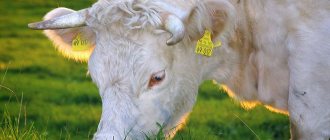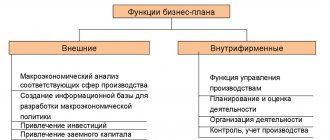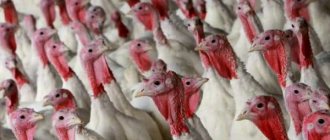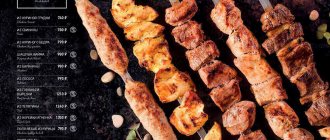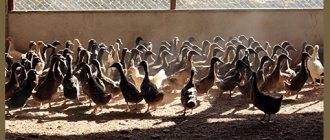Is the pheasant farming business profitable? How to competently draw up a business plan and calculate expenses? Where to find a market for ready-made meat? Is selling eggs and chicks profitable? What documents are needed to register a business?
The idea of pheasant breeding will be of interest to those residents who own farmland or a large area in the countryside. This is not as popular a bird as ducks or broilers, but raising pheasants at home is a profitable and profitable activity.
Poultry meat was highly appreciated by lovers of exotic cuisine, and restaurateurs in their establishments developed and included it in their unusual menu.
Pheasant carcasses are almost impossible to find for sale on the market, although elite trading establishments purchase and successfully sell them. There is definitely consumer demand for such a product, but you need to know some nuances about how to build a successful business and make a profitable pheasant farm.
Choosing a direction of activity
Breeding exotic birds can be a good source of income for budding businessmen. The first step is to study the demand for pheasants. As a rule, they are grown for restaurants and hunting farms. Therefore, it is important to determine the form and method of selling the bird:
- Sale for meat.
The main clients will be expensive restaurants and specialty supermarkets. Sales for export are also possible, but it will be difficult for a beginner to ensure a sufficient volume of sales and prepare the necessary documents.
- Breeding pheasants for breeding and hunting.
Hunting farms and individuals can buy birds for hunting, which are divided into two types - introduced birds and decoy birds. In the first case, the birds are released in advance of the hunt so that they become accustomed to their natural habitat. With the “decoy” option, the bird is released before the hunting process.
- Sale to collectors and private zoos.
Not very common, but very profitable direction. The cost of one pheasant can reach $500. But breeding breeding birds requires a lot of experience.
Video on the topic:
Breeding Features
Poultry farmer experience
Pheasant - special, for hunters
What's special about pheasant meat?
In ancient times, one of the types of hunting was the royal pheasant hunt. The meat of this bird is tasty and tender, so it was customary to serve it as a delicacy at royal feasts. Today, pheasant meat is used for preparing dishes for celebrations, in elite restaurants and cafes. Farmers realized that they could earn money by selling pheasant meat, because it is popular among gourmets and people watching their diet. The returns also speak in favor of breeding pheasants, because in a short period of time a bird weighing up to 2 kg can be raised from a chick. Pheasant meat is considered a dietary product because it contains a minimum of fat.
Organization of a pheasant farm
Construction of enclosures is one of the most expensive stages of a business plan. To keep 600 pheasants, an area of 4 acres is sufficient. Equipping all the necessary living conditions costs about 3-4 thousand dollars. These costs are relatively low and can quickly pay for themselves (1.5-2 years).
The height of the enclosure should be sufficient for the pheasants to try to fly. When calculating the area per bird, there should be about 2 m².
It is recommended to surround the enclosure with a welded metal mesh with 2.5 centimeter cells. You should not use chain-link netting, as pheasants often get entangled in it and can injure themselves. The aviary must be covered so that the bird does not fly away. It is cheaper and more practical to choose a fishing net that transmits light well and holds the bird.
After installing the enclosure, it must be treated with bleach. Birds can be released after 5 days of disinfection. It is necessary to equip the enclosure with drinking bowls and feeders. Young chicks are kept in cages. In addition, many farmers put special red glasses on the beaks of adult individuals, which do not allow them to tear out feathers from each other.
Breeding and the first three weeks of life of the chicks are carried out in an incubator. Since the cost of young animals is high, it is better to purchase this device at the start of organizing a pheasant farm. An incubator with a capacity of 500 eggs will cost about 1600-2000 rubles.
Video on the topic:
Aviary from a converted greenhouse
Poultry house
Sale of pheasant eggs
Another way to make money from pheasants is to sell pheasant eggs. Pheasant eggs are not only edible, but are also considered tastier and healthier than chicken eggs. In addition, they are used for dietary and baby food, as they are non-allergenic. Their only disadvantage for consumers is their high cost. Not everyone can afford to buy eggs at such a high price. More than half of the fertilized eggs (up to 70%) remain on farms, and the remaining 30% are sold to collectors and hobbyists at the price of a hatching egg. According to experienced poultry farmers, well-known breeders have a waiting list for hatching eggs a year in advance.
Selection of food supply
The daily diet of a pheasant includes 80-100 g of feed. This is four times less than feeding chickens. At the same time, the pheasant reaches adult size after 3-4 months and weighs on average 1.2-1.5 kg. During this period, it looks like an adult, but its bright plumage appears only after molting (after another 2 months). The full cycle of growing pheasants on farms is 5 months.
There are no special requirements when choosing a food supply. The best option is chicken feed, which is used for broiler chickens (for example, PK-5, PK-6).
Sales of goods
From such a farm you can sell meat, live birds, eggs, young animals, feathers and even droppings for fertilizer. Each option has its own characteristics:
- When raising birds for meat, you need to find regular buyers. They can be prestigious restaurants and specialty stores with expensive luxury goods. Such birds are not sold in ordinary supermarkets because they are too expensive.
- You can also export meat, then the profitability of the business will increase significantly. True, in order to establish such sales channels, you will have to seriously approach the issue of obtaining all the required documents, permits and veterinary conclusions.
- Ornamental breeds of pheasants are sold to private zoos. There they serve as decoration. Some wealthy people want to have these birds in their yard as collector's items.
- By establishing cooperation with hunting grounds, you can regularly sell a certain number of birds. At the same time, it is desirable that they be released into the wild some time before the start of the hunt, so that the pheasants become slightly wild and cause excitement among lovers of this type of recreation.
You can organize such entertainment yourself, which will bring significant profits. But remember that when a bird is released, it becomes the property of the state.
To avoid unnecessary problems and financial losses, each individual should be ringed and engraved. Then the hunter will be able to prove that he shot the bird he paid for, and you will have a chance to return the other pheasants to the farm, explaining their presence in the wild by saying that they simply ran away.
Rules of care
The chicks hatch at 25-35 days. They are first kept in an incubator, then transferred to an aviary separated from adult birds. The young animals are fed greens, boiled chicken eggs and mealworms, and watered with sour milk or water.
There should be one male for every three adult females. After a year, pheasants reach sexual maturity and reproduce. The male is slightly larger, has a more original color, and is therefore more valuable. Females lay eggs every few days. In captivity, these birds practically do not hatch them, throwing them into the mud. Therefore, it is important to collect them on time. For hunting purposes, pheasants are sold at 5-6 months of development after molting.
Pheasants are well adapted to frost, but for successful maintenance it is better to use a warm room in winter. There is no need for additional heating; an ordinary poultry house is sufficient for protection from wind and severe frosts.
Video on the topic:
Business Features
Poultry farm
From big to small and vice versa
During the egg-laying period, the female lays about 60 eggs. This period does not last the whole year, as in chicken, but only a few months. It is necessary to note some specific behavior of the female: she is not very worried about her offspring. Therefore, she can simply forget about the laid egg and it will either be trampled by relatives, or pecked by other individuals. Therefore, laid eggs must be collected immediately.
At home, the eggs can be incubated by the female. On some small poultry farms, laying hens are involved in this process. But the most profitable way is to place them in an incubator. The hatching rate with good producers is quite high. The incubation period lasts more than 25 days. Hatched pheasants are kept separately from adults.
The young animals are fed with chopped herbs, hard-boiled chicken eggs, mealworms and mixed feed. Small pheasants are given yogurt and water to drink. The young grow quickly. With proper nutrition and care, within 4-5 months the weight of the bird reaches one or two kilograms, which is sufficient for this type of game.
Choosing a pheasant breed
The pheasant is considered to be the royal bird. Its meat has an excellent taste, and hunting the bird is a fun and exciting process.
When choosing a breed and breeding pheasants, it is necessary to take into account the bird’s preferences, requirements for laying eggs and mode of life, which vary.
The genus of Pheasants is divided into Japanese and common (Caucasian). The last of them has more than 30 subspecies.
- The Japanese also has several subspecies, characterized by variegated green plumage.
- The hunter was bred by hybridization. It is bred on farms in Europe and America, obtaining new lines from crossing.
- Eared - more massive than other species. It has long feathers around the ears, legs with expressive spurs and a large beak.
- The golden one was developed in China. It has an irresistible appearance - red and golden plumage, a bright crest and a long black tail. Due to its low weight it is not used for industrial purposes. It acclimatizes well in Eastern European countries, but due to its bright color it quickly falls into the hands of a predator. Therefore, they most often live in zoos.
- Silver has a wide crest, thread-like white and black color. It inhabits the mountain forests of China, where 13 of its subspecies can be found.
- Royal is one of the most common types of decorative purposes. It has golden-brown plumage. The total length of the bird reaches 2 meters, of which 1.5 meters is the tail. In some European countries it is used for hunting; in Russia it is most often found in the zoo.
Video on the topic:
About breeds
Pheasant hatching
Ash Hunter
Pheasants for private mini-zoos
Private mini-zoos are found directly in the summer cottages of people with a high position in society and a good income. Setting up mini-zoos is a young hobby that is gaining popularity among wealthy people. Purebred pheasants are an integral part of a private zoo, an elite restaurant or a colorful cafe. Breeding rare species of pheasants is a separate niche of this business, because it is profitable, but risky. It is better to do this if you have experience in breeding ordinary chicks.
Financial plan
When calculating basic financial costs, use the following indicators:
- Breeding one bird costs about 400-500 rubles; it can be sold for 1200-1500 rubles.
- Breeding pheasants as a business is quite a profitable area for poultry farming (55-60%).
- Equipping a pheasant farm for 500 birds costs approximately 400 thousand rubles. As your business develops, costs can gradually be reduced. This amount includes equipment for housing, purchase of young animals and feed, vaccination, and registration of permits.
- A larger-scale project is the organization of a pheasant farm for 10,000 birds, which will cost about 3.5 - 4 million rubles. The payback period for such a project varies within 3-4 years when organizing a full cycle - selling not only meat and pheasant stock, but also selling eggs, manure for fertilizer, and feathers.
The information provided in this article is only a brief introduction to the essence of the business. If you decide to move on to implementation, then you need to download a professional poultry farm business plan with detailed calculations:
Process concept from procurement to care
Breeding pheasants has a striking difference from the livestock category in terms of economic costs and time. In order for a farmer to get meat from, say, a cow, he needs to make every effort to maintain it for two years when it would take about five months to raise such a bird.
The pheasant farm has several categories based on its productivity:
- breeding and feeding;
- incubation period;
- breeding a new subspecies and their reproduction;
- sales of meat and offal.
Profit growth depends on the underlying investment base. A profitable sale of carcasses pays back all the funds invested from the conceived idea.
Sales problems
Many restaurants and supermarkets continue to order foreign game frozen. The key task of the entrepreneur is to prove that fresh chilled meat grown in the nearest region is much better.
The main mistakes of novice businessmen are the lack of necessary processing technologies, proper marketing and packaging. If you approach sales organization wisely, ensure competitive prices and regular delivery of a quality product, you can acquire a constant circle of wholesale buyers.
Keeping pheasants in winter
Many breeds of pheasants are frost-resistant. It is they who are recommended to breed in Russian conditions. But it won’t hurt for them to create conditions that would allow the bird to safely overwinter.
When it’s frosty outside, pheasants don’t really need an enclosure, so farmers often move them to insulated poultry houses for the winter. Additional lighting is provided in poultry houses - this will prevent a drop in egg production.
If winter-hardy breeds are bred, there is no need to build a special winter hut. The only thing that can be insulated is the enclosure itself. To do this, a special coating is placed on the floor and walls to protect the pheasants from drafts and wind.
In winter, the diet is adjusted. The main thing is to provide pheasants with food that provides energy. The emphasis is on corn grains. If whole grain is given, then there should be a lot of fine gravel in the aviary - it will grind the grains in the birds’ stomachs.
How to write a business plan?
As with other businesses, raising pheasants commercially from scratch (even in small batches) will require a business plan. It is better to start your activity by purchasing a family of pheasants. Thus, you will personally go through the entire cycle - from eggs to adults, and will be able to gradually increase production.
Start production with a small batch (maximum 100 individuals). Do not make large investments without any work experience.
You can immediately purchase chicks (the price of one piece is about $4). Therefore, decide in advance how many chicks to have. It is also worth considering the option of purchasing an incubator (minimum $45) and buying eggs (about $0.4 per piece).
In general, the amount for the initial business will vary depending on the availability of your housing facilities, poultry house equipment, and other details. According to experts, $300 is enough to start a business.
On a note! Keep in mind that the price of females is higher than the price of males, and purchasing chicks in the fall will cost less than in the spring.
All expenses for the purchase and maintenance of one bird are about $10. Also included in the main capital investments are the costs of:
- Payment for a veterinarian (treatment, vaccination).
- Business registration.
- Obtaining permission to sell meat.
- In case of expansion of production: payment to farm workers.
Ignorance of the production cycle when breeding exotic individuals can lead to failure. However, don’t be upset, after the downs there are ups. The main problems that beginners face are:
- insufficient knowledge of cultivation methods;
- incorrect assessment of economic reality, which is constantly changing;
- in choosing an inadequate sales market.
Marketing
The market for the sale of royal bird meat is free from competition. Before starting production, the pheasant producer must research the level of demand for the product in the region. Will the selling price be enough to make a decent profit? Will eggs, chicks, and meat produced for the market be in demand? Everything should be carefully thought through and analyzed.
The market largely dictates the type of birds that should be raised. The cost of one live bird is about $20, and for use in head hunting they ask for up to $30. Raising chicks for the entertainment business is in demand and helps attract more and more new clients. In addition, pheasants are sold:
- as gourmet products (mainly restaurants);
- to private individuals for selective slaughter;
- droppings and feathers are sold;
- as a breeding bird for other farms;
- eggs (one female produces about 20-60 pieces, sometimes more);
- sale of small chicks;
- meat for canned hunting;
- replenishment of birds in wildlife.
For a business to become successful, you should not focus on a single sales option; you need to try all areas together. The profitability of the activity is 45-50%. This is a wonderful investment to produce such a rainbow of birds and exotic, healthy food!
If a business has begun to function successfully, it will need expansion. Therefore, you will have to register as an Individual Entrepreneur or as a Limited Liability Company. Depending on the turnover, register the farm as an individual entrepreneur or LLC.
Remember! Clients traditionally have greater trust in legal entities.
You will also need permits, for example, veterinary certificates, SES reports, and product certificates.
Choosing a breed for meat and for sale
To raise healthy pheasants, you need to know the characteristics of each subspecies:
- Hunter's steppe. This breed is often bred for meat. This is an unpretentious individual that does not need foreign food supply. Pheasants are accustomed to the climate of our country and can withstand frost and various diseases. Features: instant weight gain and high level of egg production. The body length is 60-80 cm. Males differ from females only in the colorful colors of their feathers.
- Gold. The purpose of breeding is the implementation of decorative subspecies. Distinctive features are bright plumage, yellow legs and beak. The average weight of the bird is 1.3 kg. Representatives of this breed often become decorations for small zoos or country restaurants.
- Silver. It is bred for complex purposes: obtaining dietary meat or breeding poultry for sale to zoos. A feature of this subspecies is considered to be semi-wild behavior: such a bird is extremely difficult to tame. The bird has thick plumage and resistance to frost.
- The Royal is one of the most valuable breeds that is bred on a farm for its meat. Individuals are sensitive to the conditions of the surrounding world. A special feature is the large size.
Cost calculation
To organize pheasant farming as a business, you need to invest a lot of money. On average, to open a farm with a productivity of up to 10 thousand individuals per year, you need to spend about 100 thousand dollars. To service it you will have to hire 2-3 workers.
The profitability of pheasant farming can be quite decent. The cost of a pheasant at five months of age is 10-15 dollars, and the cost of one individual is 5-6 dollars (including food and payment to employees). Investments will begin to pay off in 2-3 years, however, we are talking about the full cycle of processing birds: selling pheasants for meat, for hunting, including droppings and feathers.
Many farmers predict that pheasant farming as a business will begin to flourish in a couple of years. By that time, enough private hunting farms should appear; in this regard, their owners will be interested in increasing and maintaining the livestock.
The basis of a pheasant mini-farm
The basis of a farm is considered to be a healthy large herd, which is why the average farm should include approximately ten thousand individuals.
An entrepreneur will need a large amount of money to start. It takes about three to five million rubles to purchase the required number of birds up to four months old. Such a farm will pay for itself in approximately three to four years, provided that the businessman uses all opportunities to monetize profits, that is, he will sell carcasses, live pheasants, droppings, and feathers. Not every entrepreneur will be able to afford to purchase so many birds at the same time, risking such a sum of money. That is why a novice businessman is recommended to try to start a small flock of two to three dozen birds. The price per individual will increase by approximately a thousand, but the total cost will decrease significantly. To buy ten heads, an entrepreneur will spend about fifteen thousand rubles, and to build enclosures for them - about twenty thousand rubles.
Business goals and benefits
All products - meat, eggs, feathers - are not cheap. The primary tasks of a farmer who decides to start breeding pheasants are:
- Decide on breeding goals.
- Choose the right breed.
- Find markets.
For meat and eggs
One meat male weighs about 2-2.5 kg. 1 kg of meat costs about 1000 rubles. The eggs can be partially used for breeding, and partially sold. If a female lays 50 eggs in a season and hatches 10, then 40 can be sold. The cost of eggs for cooking is 55-200 rubles per piece. It is easy to calculate that one female brings from 2 to 8 thousand rubles a year on eggs alone.
To make a real profit, you need to keep a large herd of queens and young animals for slaughter. It is important to know that meat can only be sold if there are accompanying documents - without them, not a single normal restaurant will buy meat from a private seller. Therefore, it is necessary to register a full-fledged enterprise that raises livestock in compliance with all veterinary standards and requirements.
Hunting
Wealthy people love to hunt pheasants. It's nice to receive a beautiful bird as a trophy. Wholesale prices for adult birds are 1,500 rubles or more.
Decoration
Pheasants have magnificent feathers, which were once used by aristocrats to decorate their everyday outfits. Today they are used to create designer and theatrical costumes, and they are bought for mini-zoos. If you grow decorative species, you can make good money.

